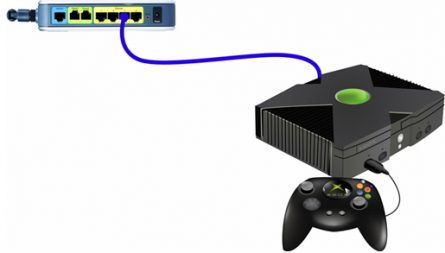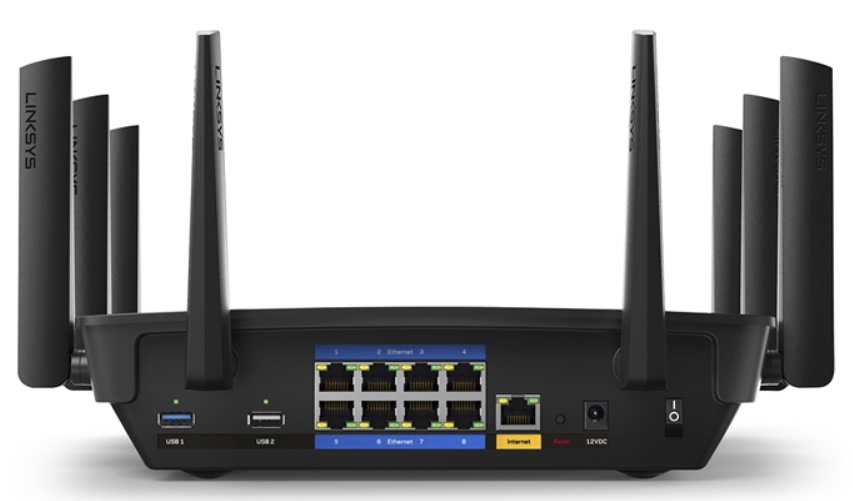
Wi-Fi is a wonderful thing, at least when everything is working the way it should be. If yours is acting up, Chris Loblaw has some quick fix solutions to try, by the way. But even when your Wi-Fi network is firing on all cylinders, you might still want to wire up your home with some Ethernet cable. Why? Because when it comes to home networking, there are still scenarios where a physical connection is better. Here’s why.
Reliable, consistent speed regardless of location and interference
The latest generation of Wi-Fi routers offers an interesting choice. On one hand, there are the blazing fast high performance tri-band routers like the ASUS ROG Rapture that offer combined speeds of up to 5300Mbps. There are also whole home mesh Wi-Fi systems that boast lower overall throughput, but blanket a home in wireless coverage.
However, all is not as perfect as it might seem, at least when it comes to high demand wireless activities like online gaming or streaming 4K video.
5300Mbps sounds like a massive amount of bandwidth. And it is. But those are theoretical maximums based on laboratory conditions that probably aren’t representative of your home. That number is also the combined bandwidth of three different bands, so the theoretical maximum speed a single device could attain is actually more like 2.1Mbps. And that doesn’t account for interference, signal degradation with distance or the demands of multiple connected devices hammering the Wi-Fi network.
Mesh networks do better with working around interference and distance issues, but maximum throughput is much less (typically 2200Mbps). That bandwidth still gets divided among multiple connected devices and the “brains” of the system is working hard to make sure that bandwidth gets distributed equitably.
 Ethernet has the advantage of running fast (most systems today support 1Mbps “Gigabit” Ethernet) without the issues of wireless interference, congestion or fading with distance (at least not the distance in a typical home). In other words with a video streamer, gaming PC or game console connected to Ethernet you can count on consistent speed. Even if someone fires up a microwave, then decides this is the day to transfer that 4K video project they’ve been working on from the computer to their iPad over the Wi-Fi network …
Ethernet has the advantage of running fast (most systems today support 1Mbps “Gigabit” Ethernet) without the issues of wireless interference, congestion or fading with distance (at least not the distance in a typical home). In other words with a video streamer, gaming PC or game console connected to Ethernet you can count on consistent speed. Even if someone fires up a microwave, then decides this is the day to transfer that 4K video project they’ve been working on from the computer to their iPad over the Wi-Fi network …
The above image from Cisco may be dated, but the concept isn’t and that’s why consoles like the Xbox One and PS4 have an Ethernet port.
Lower latency
Gamers are especially sensitive to the issue of latency, or lag. This results in a small pause between you on your PC or Xbox and the server an online game is hosted on. Latency can mean an early exit from a game. If your Wi-Fi router supports traffic prioritization, giving gaming a higher priority than other applications helps to reduce wireless latency, but Ethernet still rules when it comes to minimizing lag.
The best of both worlds
The good news is that with a high powered Wi-Fi router, you don’t have to choose! Even basic Wi-Fi routers have an Ethernet port, but as you move up the range you get more of them.

I currently use a Linksys Max-Stream AC5400 router (reviewed a few years back by Shelly Wutke). It offers combined Wi-Fi throughput of up to 5.3Mbps and blasts it throughout the house with eight powered antennas. Wi-Fi performance is not a concern with this router. But, for applications that would still benefit from the advantages of an Ethernet connection, this Wi-Fi router also has eight Gigabit Ethernet ports. It offers the best of both worlds.
No matter what your networking needs might be—a new router, a whole home mesh Wi-Fi system, a range extender, a Wi-Fi adapter for your PC or even Ethernet cable—Best Buy has you covered.



